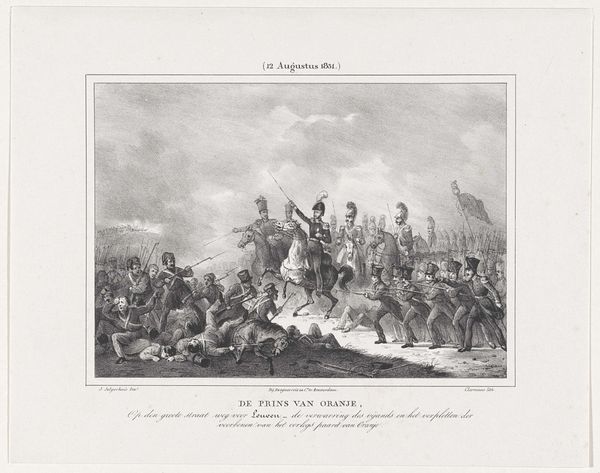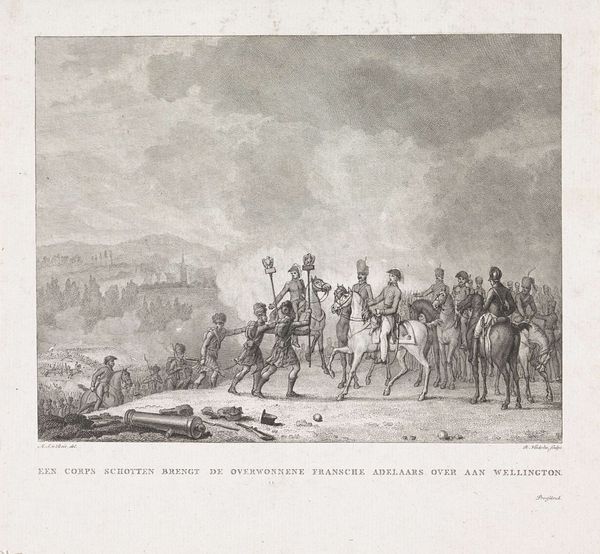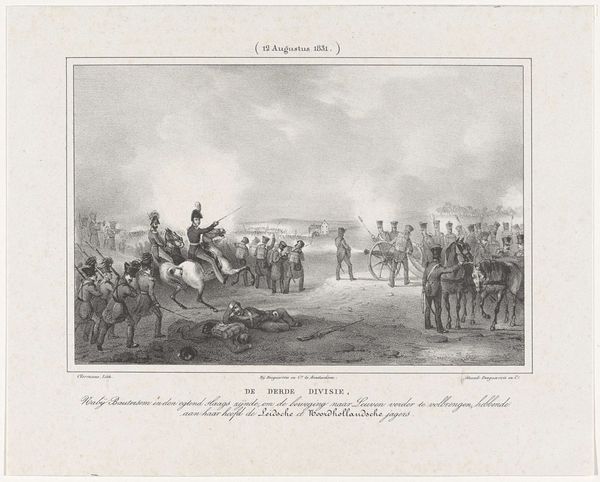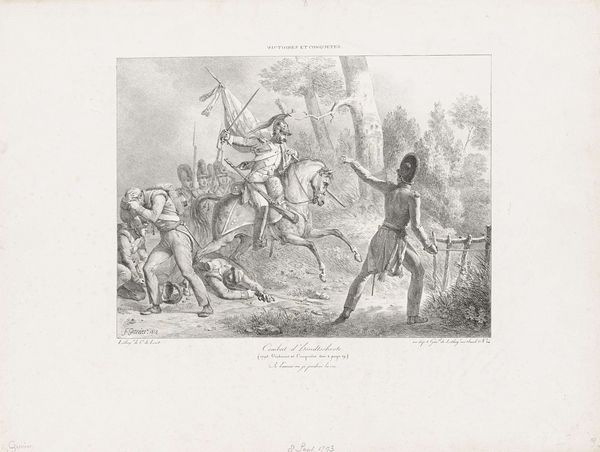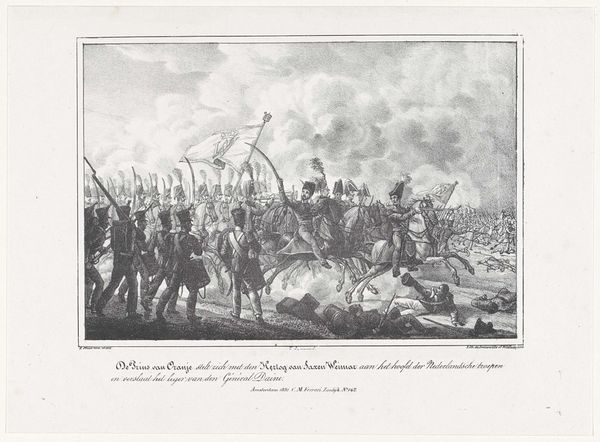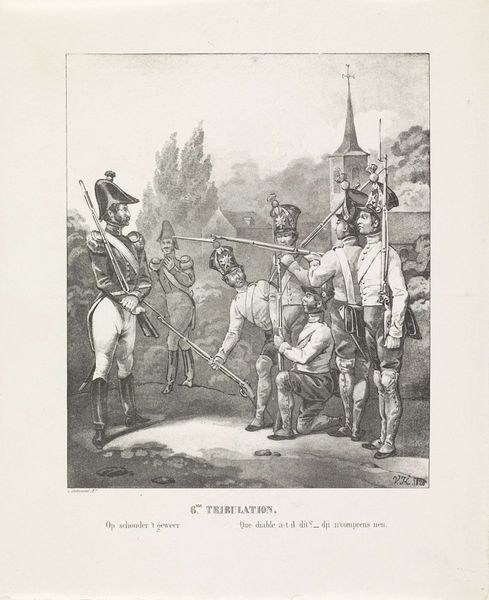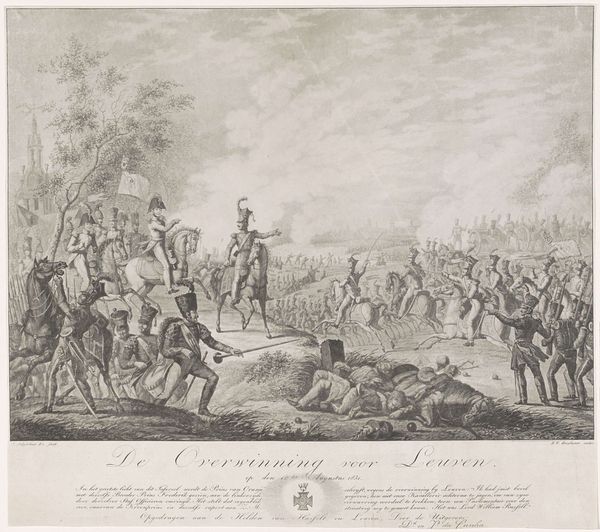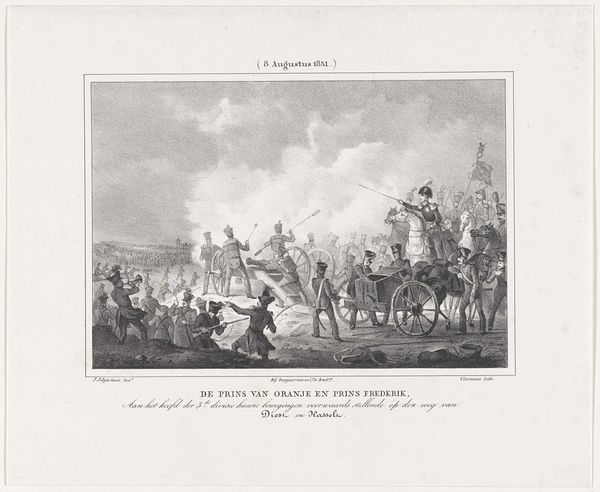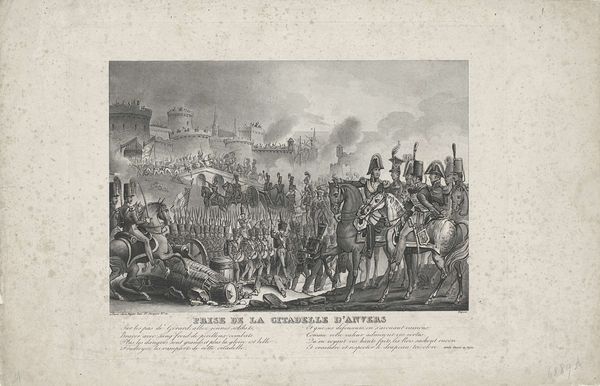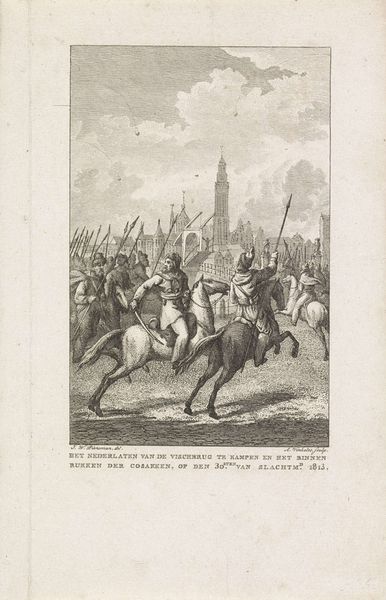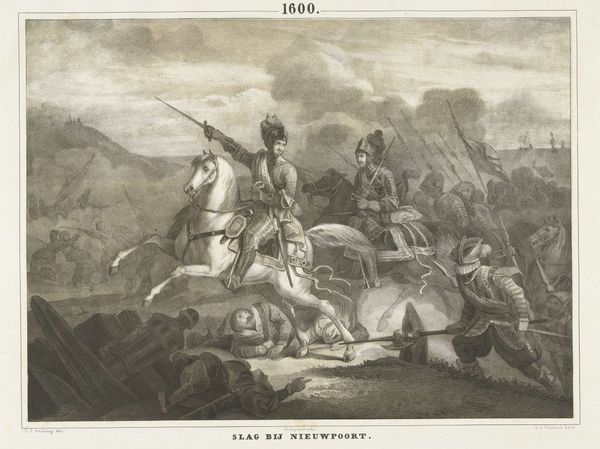
print, engraving
#
neoclacissism
#
narrative-art
# print
#
old engraving style
#
figuration
#
line
#
history-painting
#
academic-art
#
engraving
Dimensions: height 348 mm, width 440 mm
Copyright: Rijks Museum: Open Domain
Curator: The stark contrasts immediately create a sense of drama, don’t you think? The composition pulls you right into the heart of the conflict. Editor: Indeed. Let’s explore “Slag bij Fleurus, 1794,” or "Battle of Fleurus, 1794", an engraving created by François Grenier in 1819, now residing here at the Rijksmuseum. What we’re seeing is a detailed portrayal of the Battle of Fleurus, rendered with the precision characteristic of neoclassicism. Note the sharp lines and carefully delineated figures. Curator: What interests me is the production context of an artwork depicting battle that happened twenty five years before the print was made. Consider the material constraints of printmaking in that era, each line etched by hand into a metal plate to create the image before transferring onto paper. And consider the politics embedded in memorializing battles—the market that existed for these pieces in post-Napoleonic Europe. Editor: Observe the figure on horseback, leading the charge, and how the engraver employs line to suggest movement and direction. It adheres to academic conventions and you can definitely tell from the lines that he or she aimed for idealized forms within the battle scene. What theoretical perspective can you suggest here? Perhaps one concerning structures of power? Curator: Absolutely. And those academic conventions are never neutral, of course. This engraving, as a commodity, perpetuated narratives of heroism that served specific socio-political ends and can contribute to military glorification, impacting how war is viewed and legitimized. Editor: Very good point. But looking at this as "simply" a work of art, the composition skillfully guides our eyes through different planes of action, from the fallen soldier in the foreground to the ranks of troops in the background, offering visual layers to unpack and explore, giving a sense of depth. What does this say about value? Curator: The act of making visible is what matters! Who made the piece, when they made the piece and, importantly, for whom. With that in mind we may ask ourselves: how this shapes our understanding of both the event itself and the broader cultural and political environment that the artwork operated in. Editor: Considering this engraving and the points raised about it have certainly offered a complex and rewarding interpretation today. Curator: Agreed. It's about interrogating its relationship to both its own time and ours, allowing for the print’s cultural power to take a whole other meaning to itself.
Comments
No comments
Be the first to comment and join the conversation on the ultimate creative platform.
